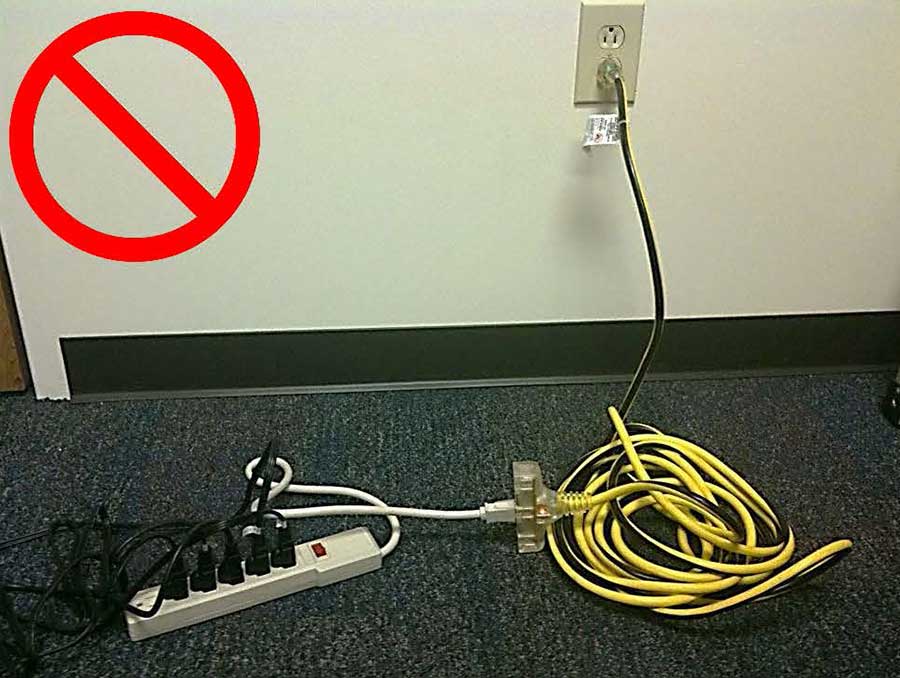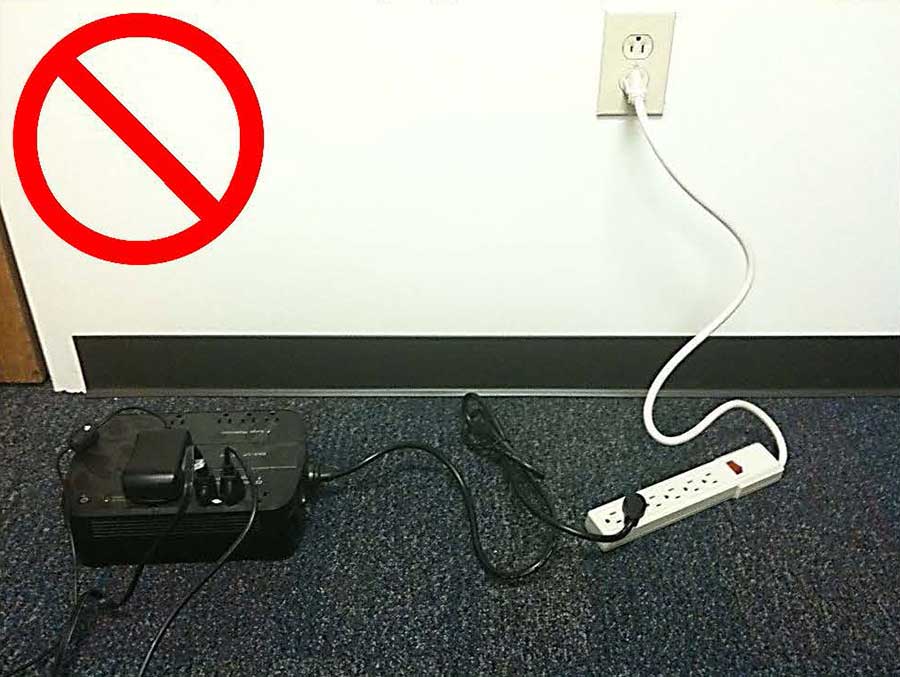It is not recommended to plug a surge protector into an extension cord. This setup can cause electrical hazards and may violate electrical codes.
Can I Plug a surge protector into an extension cord, often referred to as “daisy chaining,” can potentially lead to dangerous situations such as electrical fires or equipment damage. This practice is generally discouraged by safety experts and may not align with manufacturer guidelines.
Manufacturers design surge protectors to be directly connected to a wall outlet for optimal performance and safety. By ensuring proper use of electrical devices, you are not only protecting your electronic equipment but also maintaining a safe living or working environment. It is crucial to read and follow the safety instructions provided with your surge protector to prevent overloading circuits and reduce the risk of fire or electrical shock. Always prioritize safety and consult an electrician if you are unsure about the correct usage of surge protectors and extension cords.

Credit: www.reddit.com
Electrical Safety First
Ensuring electrical safety in our homes and offices is vital. One common question is whether you can plug a surge protector into an extension cord. Before addressing this query, understanding the risks and adhering to manufacturer’s guidelines is crucial for safety and equipment longevity.
Risks Of Daisy Chaining
Daisy chaining refers to plugging one power strip or extension cord into another. This practice poses several risks:
- Overloads: Multiple devices can draw too much power.
- Heating: Heat builds up, potentially causing fires.
- Circuit Stress: Stressed electrical circuits may fail.
Manufacturer’s Guidelines
Always check the product’s manual before usage. Manufacturers provide guidelines for a reason:
- Warranty conditions: Improper use voids warranties.
- Safety instructions: They highlight safe practices.
- Device capability: Inform on the power limits of the device.

Credit: twu.edu
Surge Protectors Vs. Extension Cords
Understanding the differences between surge protectors and extension cords is vital. Both serve distinct functions in powering devices and safeguarding electronics. Yet, the question remains: can you plug a surge protector into an extension cord? Let’s delve into their definitions and functions to see how they compare and contrast.
Defining The Tools
Can I Surge protectors and extension cords are not the same. Each tool has its unique purpose for your electronic devices. A surge protector safeguards your electronics from voltage spikes. An extension cord simply extends the reach of your power outlet.
| Tool | Main Use |
|---|---|
| Surge Protector | Shields against power surges |
| Extension Cord | Increases cord length |
Functional Differences
A surge protector contains circuitry designed to block or divert extra voltage. Its protection is critical for sensitive electronics. An extension cord, however, offers no such protection. It is a length of power supply wire with a plug on one end and one or more sockets on the other.
- Surge Protector: Contains in-built circuitry to prevent electrical damage.
- Extension Cord: Lengthens the distance between a device and an outlet.
Potential Hazards
Exploring the ‘Potential Hazards’ of plugging a surge protector into an extension cord reveals crucial safety concerns. These practices might seem convenient. But they invite numerous risks that every user should be aware of. Let’s delve into the common dangers associated with this setup.
Overloading Concerns
Surge protectors and extension cords have limits. Combining them risks overloading. Each device has a maximum power rating. When devices together exceed this limit, danger arises. Overloading can go unnoticed until it causes serious harm.
- Tripped circuit breakers: A sign of overcapacity.
- Damaged appliances: Due to unstable power flow.
- Electrical shock: From stressed electrical systems.
Heat Buildup And Fire Risks
Heat buildup is silent but harmful. Electrical components become hot when current flows. Too much current means excessive heat. This scenario is common with surge protectors plugged into extension cords.
| Condition | Potential Outcome |
|---|---|
| Inadequate Ventilation | Heat cannot escape, raising fire risk. |
| Continual Use | Heat accumulates over time, leading to melting. |
| Flammable Surfaces | Contact with heat ignites surfaces, sparking fires. |
A surge protector’s function is compromised if it overheats. It may stop protecting your devices. In the worst case, it can start a fire. Fire departments warn against this risky combo. They deal with fires caused by it yearly.

Credit: twu.edu
Best Practices For Safe Usage
Understanding the best practices for safe usage is crucial when combining a surge protector and an extension cord. Misusing these devices can lead to electrical hazards. Safety must always come first to protect your devices and, more importantly, your home.
Proper Configuration
Adhering to the proper configuration is essential:
- Check the ratings of both the extension cord and surge protector.
- Ensure the extension cord is heavy-duty and can handle the load.
- Plug directly into a wall outlet whenever possible.
- Avoid daisy-chaining multiple surge protectors or extension cords.
Regular Inspection
Regular inspection ensures safety and performance:
- Examine for any damage like frayed wires or loose connections.
- Test surge protector operation lights if available.
- Replace either item if you discover wear or damage.
- Disconnect the setup if not in use.
| Frequency | Action | Purpose |
|---|---|---|
| Monthly | Visual Inspection | Identify wear and tear early. |
| Bi-Annually | Performance Check | Ensure effectiveness in surge protection. |
| Annually | Professional Evaluation | Get an expert’s seal of approval. |
Alternatives To Combining Devices
Finding alternative ways to power devices safely is key to avoiding potential risks. It is best not to plug a surge protector into an extension cord. We will explore safer solutions here.
Surge Protector With Longer Cord
A longer cord on a surge protector can reach further without an extension. This practice maintains a safe environment. Below, find options you might consider:
- Choose a surge protector with a cord length that meets your needs.
- Check the ratings of surge protectors to ensure they fit your devices.
- Pick a model with enough outlets for your electronics.
High-quality Extension Solutions
For reliable power without the hazards of daisy-chaining, look for high-quality extension solutions. Here are some tips:
- Inquire about heavy-duty extension cords that can handle the wattage of your devices.
- Ensure the extension you choose is rated for the intended use, either indoor or outdoor.
- Opt for extensions with built-in surge protection to offer another layer of safety.
| Feature | Surge Protector with Longer Cord | High-Quality Extension Solution |
|---|---|---|
| Cord Length | Minimum 6 feet | Varies based on type |
| Outlets | Multiple | Dependent on design |
| Safety | Built-in surge protection | Rated for specific use cases |
Frequently Asked Questions Of Can I Plug A Surge Protector Into An Extension Cord
Is It Ok To Use Extension Cord With Surge Protector?
Yes, you can use an extension cord with a protector as long as both are of high quality and properly rated for the devices you’re connecting. Avoid daisy-chaining multiple power strips together.
Is It A Fire Hazard To Can I Plug An Extension Cord?
Plugging an extension cord into a surge protector can be a fire hazard if it exceeds the unit’s power capacity. Always check the rating to ensure safe usage.
What Can I Plug A Surge Protector Into?
You can plug a surge protector into any standard grounded AC electrical outlet. Ensure it matches your device’s voltage requirements.
What Should Not Be Plugged Into A Surge Protecto?
Do not plug in high-power appliances like refrigerators, space heaters, or microwaves into a surge protector. These devices can overload the protector, posing safety hazards.
Is Plugging Surge Protector Into Extensions Safe?
Plugging a surge protector into an extension cord is not recommended due to potential safety hazards and violation of safety codes.
What Risks Come With Daisy-chaining Power Devices?
Daisy-chaining power devices can cause overheating, electrical fires, and can overload circuits, posing a serious fire risk.
Can Extension Cords Reduce Efficiency?
Yes, extension cords can diminish the effectiveness of surge protectors, possibly leading to underperformance in surge protection.
How Does Cord Length Affect Surge Protection?
Longer cords can lead to a reduction in voltage regulation and surge protection efficacy due to increased resistance.
Are All Surge Protector Compatible With Extension Cords?
Not all surge protectors are designed to be used with extension cords, and compatibility should be checked to ensure safety.
What’s The Safest Way To Extend Power Reach?
The safest way to extend power reach is by using a longer, high-quality surge protector instead of connecting multiple power devices.
Conclusion
Plugging a surge protector into an extension cord is not advised. Safety risks and the potential for electrical hazards increase with this practice. It’s essential to follow manufacturer guidelines to ensure your devices and home remain secure. Always consult an electrician for the best approach.
Protect your electronics smartly — avoid shortcuts when it comes to power.
















